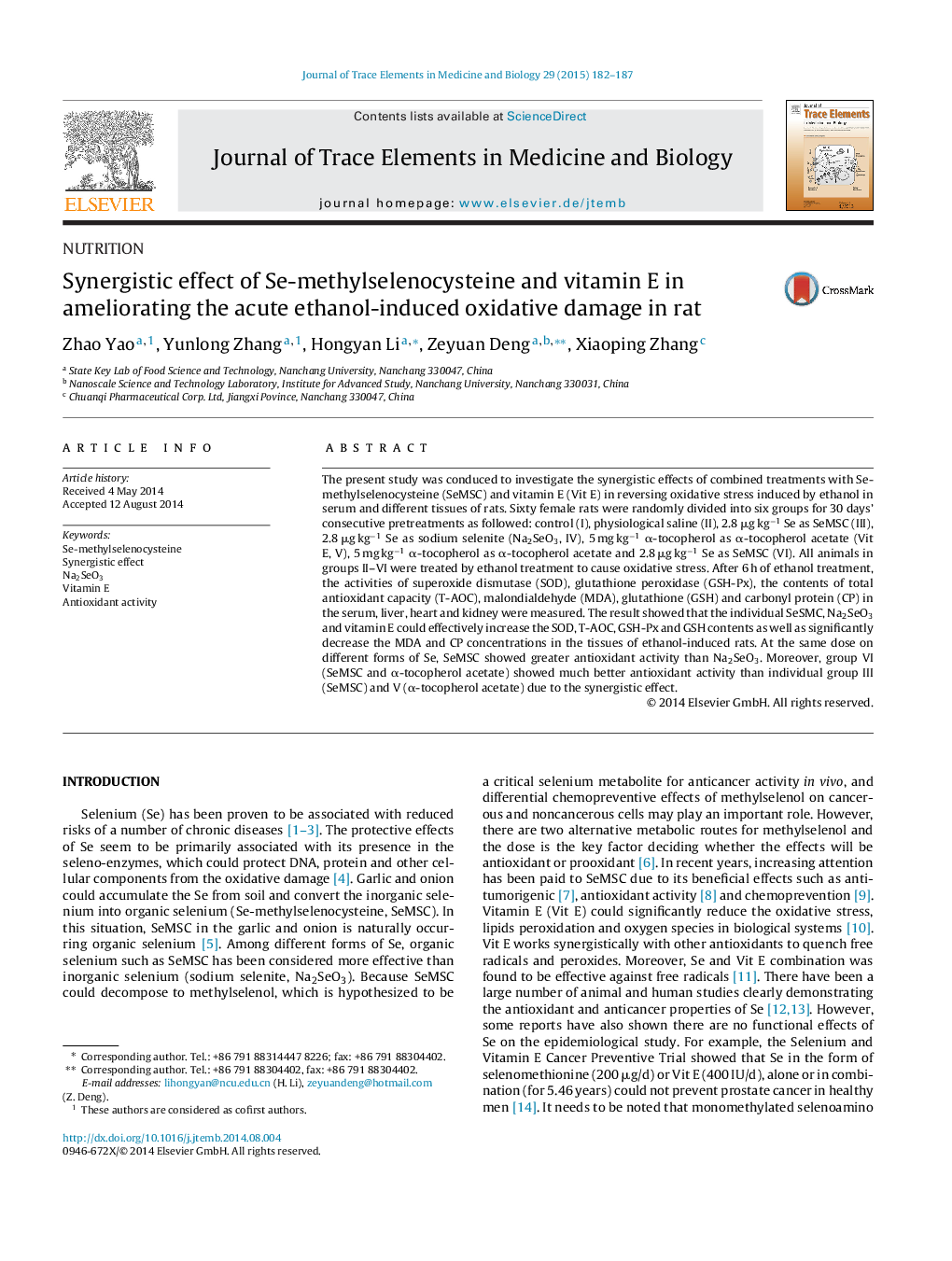| Article ID | Journal | Published Year | Pages | File Type |
|---|---|---|---|---|
| 1227359 | Journal of Trace Elements in Medicine and Biology | 2015 | 6 Pages |
The present study was conduced to investigate the synergistic effects of combined treatments with Se-methylselenocysteine (SeMSC) and vitamin E (Vit E) in reversing oxidative stress induced by ethanol in serum and different tissues of rats. Sixty female rats were randomly divided into six groups for 30 days’ consecutive pretreatments as followed: control (I), physiological saline (II), 2.8 μg kg−1 Se as SeMSC (III), 2.8 μg kg−1 Se as sodium selenite (Na2SeO3, IV), 5 mg kg−1 α-tocopherol as α-tocopherol acetate (Vit E, V), 5 mg kg−1 α-tocopherol as α-tocopherol acetate and 2.8 μg kg−1 Se as SeMSC (VI). All animals in groups II–VI were treated by ethanol treatment to cause oxidative stress. After 6 h of ethanol treatment, the activities of superoxide dismutase (SOD), glutathione peroxidase (GSH-Px), the contents of total antioxidant capacity (T-AOC), malondialdehyde (MDA), glutathione (GSH) and carbonyl protein (CP) in the serum, liver, heart and kidney were measured. The result showed that the individual SeSMC, Na2SeO3 and vitamin E could effectively increase the SOD, T-AOC, GSH-Px and GSH contents as well as significantly decrease the MDA and CP concentrations in the tissues of ethanol-induced rats. At the same dose on different forms of Se, SeMSC showed greater antioxidant activity than Na2SeO3. Moreover, group VI (SeMSC and α-tocopherol acetate) showed much better antioxidant activity than individual group III (SeMSC) and V (α-tocopherol acetate) due to the synergistic effect.
